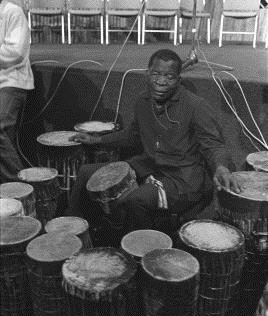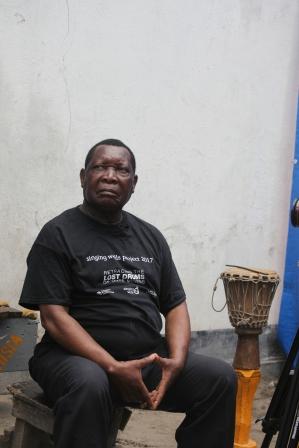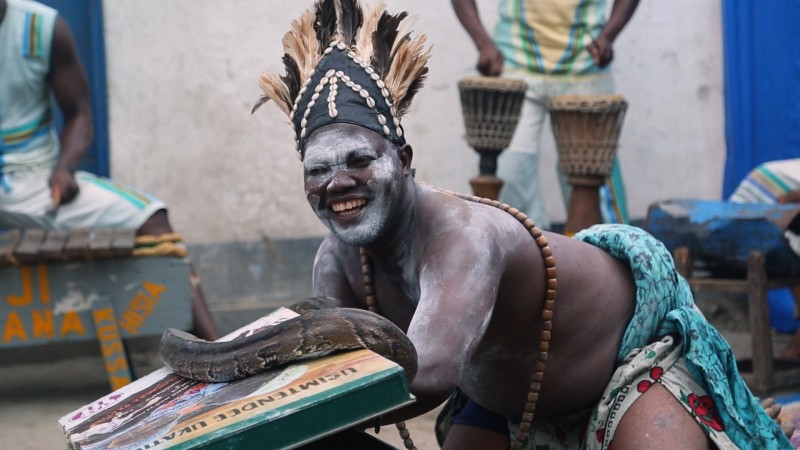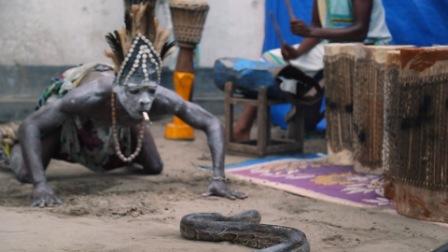We meet the family of Mzee Morris and see our first Snake Dance
Okay, let’s first cover some basics:
- This is a field report. We write these on a daily basis as we travel in the field, doing our best to record traditional groups, songs, and stories. All groups and songs mentioned here will eventually turn up on YouTube (see our current video collection here), as we prepare each of the videos. We will go back to these reports and provide hot links to all of these, but that will take a couple months or so, so please be patient.
- This is our first trip to Tanzania. For those of you that have followed Singing Wells, you will know that we’ve been working for seven years now in Kenya and Uganda. We thought we would have covered more countries by now, but we have been blown away by the richness of the traditional music in these two countries, so we kept going back. We are very excited now to start our work in Dar es Salaam and Bagamoyo on this trip but also recognize this is tip of the iceberg. We think we will be spending next 3-4 years coming back to Tanzania.
- The basic structure of a Singing Wells field visit is to accomplish three things:
- We are here to record traditional music and dance so we can preserve it and share it. In some instances, this is bittersweet as we fully recognize we are recording a style or genre that is dying and we are probably recording the last breaths. In Mission 1, we are purists – recording the village performances as they have been traditionally performed. This includes the background noises of ‘chicken and children.’ Generally we become surrounded by village children by the end of each field session and we celebrate that their voices create a lovely background in our recordings.
- We are also here to try to bring this music to new artists and audiences, to show how it can inspire and inform more contemporary artists. This is why we always bring ‘Influences Artists’ with us on each trip and this is why our nights are filled with ‘hotel’ recordings where our ‘Influences Artists’ are reworking songs with the more traditional artists we discover in the villages. In Mission 2, we are ‘fusionists’, trying any old blend of new and old that fancies us at the time, that inspires our artists to go in new directions. So, there will be chaos. We simply want to enjoy music and the cultural collisions we create are part of the fun.
- We also try to tell a single story on these visits. For this trip we are retracing the drums of Mzee Morris. We will tell his story as we go.
- So, we’ll tell you about these missions in these field reports, trying our best to record accurately the songs, performers and instruments. We welcome all corrections as we recognize that there will be mistakes.
With that out of the way, let’s begin. We arrived in Dar es Salaam Tanzania at 0815AM (yes, our departure from Nairobi was early!). The full Singing Wells crew is sleepless. The Abubilla Music Foundation Crew (Jimmy, Hunter, Sophie and Elliot) arrived in Nairobi from London the night before. The Ketebul team (Tabu, Steve, Patrick and Nick) spent the evening preparing equipment. After a brief hold up at airport to check documents and buy a chicken burger, we were met by our drivers, Isaac and Abdullah, and drove immediately to our first field visit – to the home of Mzee Morris’s son, Rafael Nyunyusa Morris.
“Retracing the lost drums of Mzee Morris Nyunyusa” is the purpose of this trip, so before discussing today’s music, let’s now give you a bit of background. Mzee Morris is Tanzania’s most famous drummer. The ‘Mzee’ in front of his name is a sign of respect – think, ‘Old Man Morris’. He was born in 1920. At two years old, he lost his sight as a result of a bout of small pox. He died in 1999. Throughout his long life he drummed. Here’s Leo Mkanyia , our 2017 Influences Artist, describing his experience listening to Mzee Morris’s music: “He wasn’t normal. He plays his drums like a guitar. You have to listen very carefully to realize not only is he keeping the beat, but he’s also carrying a melody. And he uses 10-12 drums, sometimes more. This is not normal. Every drum was a note for him. He picked the skins for the drums and made them himself, finding in each the perfect tone. I have studied his music over years and I still can’t believe what he could do.” In Dar es Salaam we talked to Daudi Fernando Joseph, drummer for the Umoja Wa Kusini dance troupe about how Mzee Morris inspired his music: “I met him at 10 years old but had listened to his drums all my life – his drums are used to announce the news on Tanzania Broadcast Corporation (TBC) hourly news bulletins. At 14 years old, I would sit at my drums just trying to recreate that one riff. It took me three months of non-stop listening to get it down. And that was just 30 seconds of his lifetime of drumming. All I want to do is master his style.”
As Daudi mentioned, Mzee Morris became the sound of Tanzanian news. The TBC announced each hour with a drum riff of his drums. Every hour, for decades. He was honoured in his time, with the then Prime Minister creating a specific post for him, so he could continue drumming for all visitors to the government. Because he was blind, he was invited to perform with specific women groups, of songs for women by women, of songs that no males could see. Every day we will tell more about Mzee Morris and his music (see picture below). We will also talk about his legacy and the attempts of his family and fans to keep his name and his music alive. Like all Singing Wells stories, this will be a celebration of music but also a shout of concern: are the great traditional instruments of East Africa and the amazing musicians that play them in danger of being lost?

And so we travel in our first hour of our first day in Tanzania to the home Mzee Morris’s son – a compound in the suburbs of Dar es Salaam. Here’s the son:

We are greeted by the music of the Nyunyusa Dancing Troupe, which included two of Mzee Morris’s grandsons, Abdala Nyunyusa Morris on vocals and Rajab Alli Nyunyusa Morris on drums. Rajab is the only of Mzee Morris’s offspring to make his living as a drummer. Here he is with Morris Drums:

Here is the group:

They played seven songs:
- Jembe ni Mali: a song to encourage farming
- Kilongo Salale: a call to unity
- Rasilmali Ya Mnyonge: The worth of a poor man.
- Bendera Ya Taifa: The flag of the nation
- The Snake Dance
- Sarakasi: Circus. This is another performing comedy song.
- Ngokwa
All of this was wonderful, but the Snake Dance was truly unique for us and definitely a top 5 Singing Wells moment. The Snake Dance originals from the Sukuma People in the Lake Victoria zone, where there are, you guessed it, lots of snakes. The tribes learn early which are the poisonous snakes and which are safe and dancers grow up learning to handle the non-poisonous snakes. The medicine doctors learn cures for snake bites. Snakes are kept as pets and feature heavily in their dances, which involve acrobatics, ‘clown acts’ and yes – snakes. Our snake was an 8-10 foot python, fat and seemingly healthy, feeding on 4-5 live chickens or rabbits a week. The Snake Dancers came out masked in Unga (flour), with a big box (spoiler alert: contains a snake). The first part of their act is pure comedy and acrobatics. One dancer knows what is in the box and is teasing the other to open it. There are mock fights, gymnastics, clown faces and general mayhem, until eventually the snake emerges. From then on, the dance is about how close the pair can get to being bitten or strangled by the snake without getting hurt. Occasionally the snake is set upon the audience but one of the dancers pulls it back by the tail just before it strikes. Breath-taking.

This form of performance is new to us (but, of course not to Tanzanians) and we’ve not seen it in Kenya or Uganda. In fact, ‘clown’ acts are quite central to Tanzanian dance as are acrobatic acts. We spoke to Leo about this. “Yes, we love to bring comedy to our music. If you look at most circus troupes that are touring in the world today, a huge number of the acrobats and clowns are Tanzanian.”

We’ll leave you here. We checked in to our hotel, the Mediterraneo Hotel, Dar es Salaam. Tomorrow we head off for Bagamoyo.
